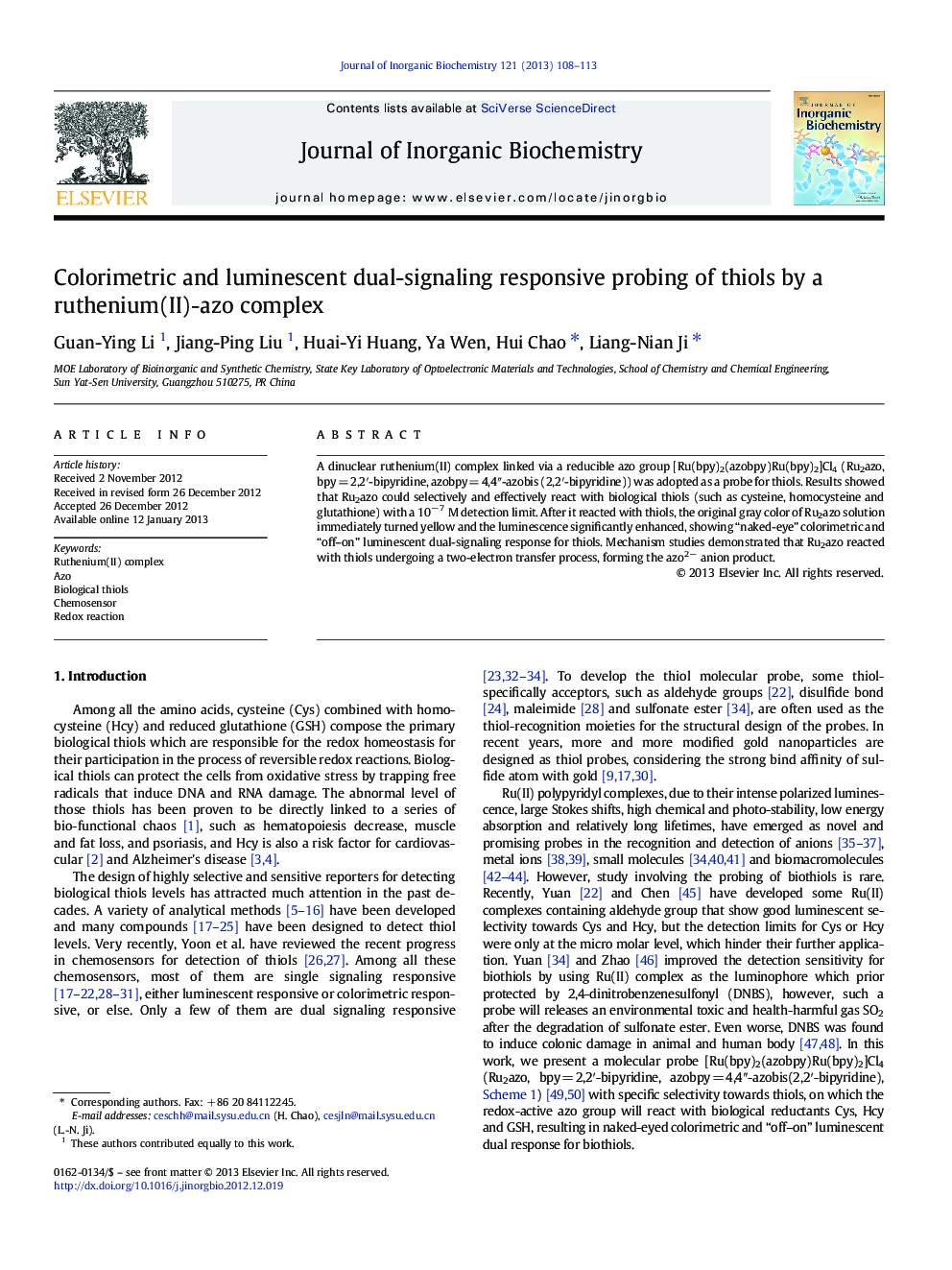| Article ID | Journal | Published Year | Pages | File Type |
|---|---|---|---|---|
| 1316049 | Journal of Inorganic Biochemistry | 2013 | 6 Pages |
A dinuclear ruthenium(II) complex linked via a reducible azo group [Ru(bpy)2(azobpy)Ru(bpy)2]Cl4 (Ru2azo, bpy = 2,2′-bipyridine, azobpy = 4,4″-azobis (2,2′-bipyridine)) was adopted as a probe for thiols. Results showed that Ru2azo could selectively and effectively react with biological thiols (such as cysteine, homocysteine and glutathione) with a 10− 7 M detection limit. After it reacted with thiols, the original gray color of Ru2azo solution immediately turned yellow and the luminescence significantly enhanced, showing “naked-eye” colorimetric and “off–on” luminescent dual-signaling response for thiols. Mechanism studies demonstrated that Ru2azo reacted with thiols undergoing a two-electron transfer process, forming the azo2 − anion product.
Graphical abstractA dinuclear ruthenium(II) complex [Ru(bpy)2(azobpy)Ru(bpy)2]Cl4 (Ru2azo) could selectively and effectively detect biological thiols with a 10− 7 mol/L detection limit. After it reacted with thiols, the original gray color of Ru2azo solution immediately turned yellow and the luminescence significantly enhanced, exhibiting “naked-eye” colorimetric and “off-on” luminescent dual-signaling response for thiols.Figure optionsDownload full-size imageDownload as PowerPoint slideHighlights► A ruthenium(II)-azo complex-based thiol probe was developed. ► Ru(II) complex can selectively react with thiols with a 10− 7 M detection limit. ► Ru(II) complexes exhibited “naked-eye” colorimetric response for thiols. ► Ru(II) complexes exhibited “off–on” luminescent switch for thiols.
